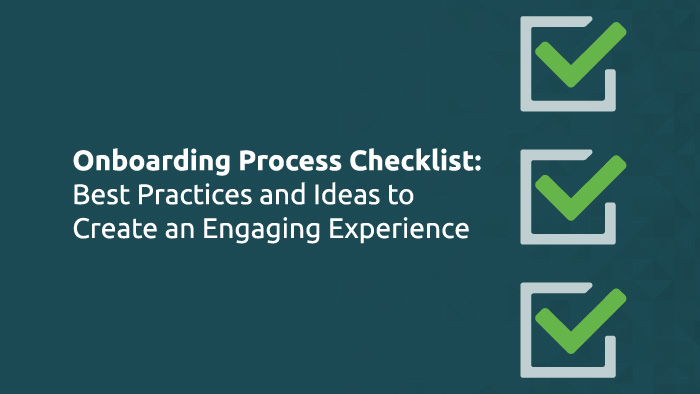For a new employee, starting a new job is certainly exciting, but it comes with a few worries as well. A great way to alleviate those worries is to have a top-notch new hire orientation. This process helps to welcome new employees to your organization, with the goal of integrating them seamlessly, so they can perform their best.
What to Include in Your Employee Orientation
Orientation is only a small part of your overall onboarding process, and it should be streamlined and focused. You want to give your new employees an overall look at the company with high-level information.
Administrative Information
You’ll want to give your new employees a taste of what makes your organization special. You should talk about its history, mission, goals, and culture. Be sure to go through the highlights of the employee handbook. Go over safety plans and procedures in case of incident. Lastly, review benefits plan information and make sure to cover when enrollment opens for them.
Here at BizLibrary, our L&D manager assigns each of these activities during onboarding and then tracks these lessons in our LMS for completion.
Administrative Policies
During orientation, you should also review important policies. Have employees review your anti-harassment policy first, before diving into other agenda items.
During this part of the process, you can also review your pay schedule, security measures, login and IT-related processes, and where to find supplies and equipment.
Lastly, cover travel expenses if the employees are to use their own vehicle or a company vehicle. Review mileage or reimbursement procedures they may encounter.
Departmental Overviews
Having new hires meet members of and get introduced to different departments during orientation can really help them feel valued from the beginning and see how the departments work together to achieve the overarching organizational goals.
Have a manager from each department talk about the purpose and functions of their department and answer any questions.
Want a deeper dive into what successful onboarding looks like? Check out our free on-demand webinar:
How to Make Orientation Fun
You’ve probably sat through an orientation that just went through the motions of delivering information in a standard way. You got all the information you needed, but it was very perfunctory. It is clear that first impressions matter both to you when hiring, and to new hires when learning about the company.
So what can be done to take what is seemingly standard, regulatory information, and make it more engaging?
When you’re going over the company’s history and department presentations, let the new employee ask any questions they have. Reassure them that there are no stupid questions. This is their time to learn and engage, and giving them that chance will help them see you as an open and encouraging workplace.
The organization is more than your logo and a fancy organizational chart. You have worked diligently to create a culture that is entirely your own, and this is the time to show it off. Show these new hires where you have come from with old pictures or a video of your growth. Make them part of your story from the moment they walk in. For some added insight on culture immersion during onboarding, check out this podcast episode.
Companies are also full of alphabet soup – different programs, products, and initiatives are likely to have acronyms and company jargon that new employees aren’t going to know. Turn learning these terms into a game. Review the different acronyms through something like bingo or a matching game. Using gamification can really help with retention of the information and make it fun to learn.
Consider having a scavenger hunt. This gets the new employees up and moving through the office. The hunt can include finding out fun facts about fellow employees, interesting things about the building, or weird items around the office.
Why You Should Invest in New Hire Orientation
New hire orientation and onboarding provide a lot of benefits. From retention to engagement to productivity, stepping out on the right foot makes a huge difference.
Orientation is your first impression to all new hires and first impressions are very important. Research by Brandon Hall Group and Glassdoor found that employers with a robust onboarding process improve retention by 82% and productivity improves by more than 70%. But if an employee feels like they had a poor onboarding process, they are twice as likely to search for new employment, according to Digitate.
Orientation lays the foundation for the new employee’s time with the organization. It provides new workers with information they need to do their job effectively. It encourages them to feel confident, ask questions, and adapt more quickly.
Without orientation, a new employee sometimes feels uncomfortable in his/her new position and takes longer to reach their full potential.
And all of this becomes even more imperative if your employees are remote. Getting them the same information, regardless of their location, will do wonders for their success at your organization. Sure, you’ll have to adapt your program a little, but be sure to put the same amount of effort into onboarding in-person and remote teams.
With BizLibrary’s vast collection of training videos spanning content from safety to software skills, there are sure to be valuable resources for your onboarding and orientation. Since the videos are short micro-lessons, employees will be able to fit them in whenever it’s convenient. You could also intentionally include time in their onboarding schedule to complete videos of their choosing, then talk about what they chose and what they learned from those videos.
Also, set aside time for your remote employees to meet the rest of the team via video conference. It’s important to make them feel like they are part of the team, even if there are scattered across the country or the globe. This way they will get to know one another and be able to understand how their roles interact. This time will also be valuable for the remote person to learn their job responsibilities and expectations.


